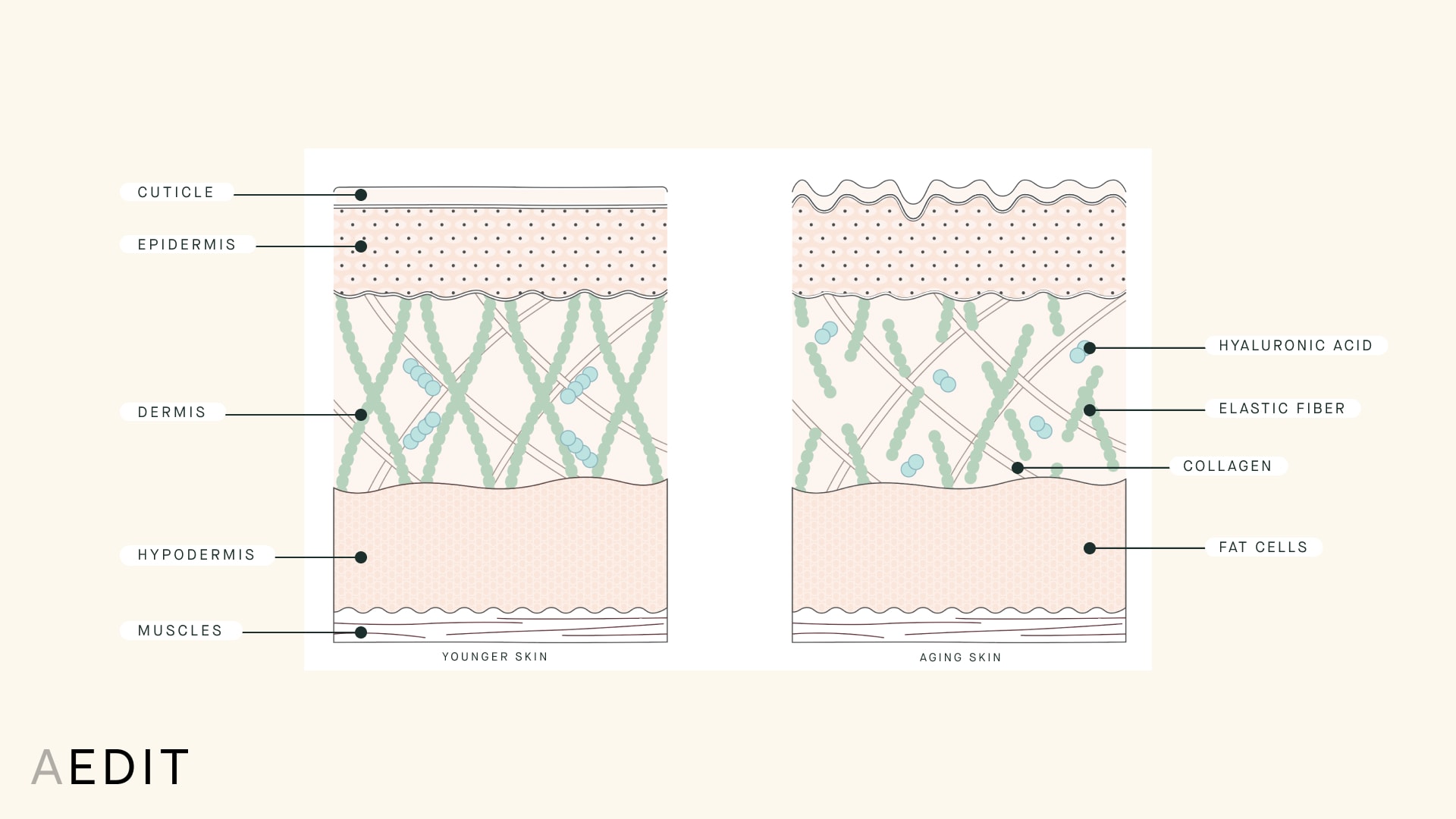Facial Skin Laxity
Skin laxity happens. Skin tightening happens, too — it just needs a little extra help. Let’s figure out how to save the collagen and elastin.
Let’s be blunt, facial skin laxity makes us look old. As our youthful appearance fades along with elastin and collagen production, sagging loose skin makes it’s grand appearance. So too do those pesky fine lines and wrinkles. When it comes to decreased facial skin laxity, even the best skin care products, skin regimens, and sunscreen often don’t cut it. Fortunately, a plastic surgeon can utilize any number of skin tightening procedures to stimulate collagen production and rejuvenate skin.
The integumentary system, aka the skin has three layers. The top epidermis, the middle dermis, and the deep hypodermis. Skin pigment cells (melanocytes) are found in the epidermis. Connective tissue and fat are found in the hypodermis. Most important to us today are fibroblasts, which are found in the middle layer or dermis.
The Anatomy of Aging Skin
Fibroblasts produce collagen and elastin. Collagen and elastin are two critical structural proteins. The majority of the dermal skin layer is composed of collagen and provides strength to the skin. Elastin is elastic! Seriously, it allows your skin to stretch and then snap back to its original shape.
It would probably be easier to review what doesn’t contribute to facial skin laxity, but that wouldn’t be very helpful would it? We all know skin sags as we age and lose collagen and elastin. There are also a myriad of other factors that can hasten this natural process. Exposure to free radicals like ROS (reactive oxygen species) and RNS (reactive nitrogen species) can augment tissue damage. These free radicals are found in some personal hygiene products, harsh chemical cleaners, food additives, pesticides, and pollution. Stress, sleeping position, sun exposure, daily wear and tear, and significant weight loss will also contribute to collagen and elastin loss.
Sagging! Losing skin laxity (please come back collagen and elastin) will cause your facial skin to lose its structural integrity and begin to droop. We won’t beat around the bush, sagging, drooping skin is not on anyone’s list of must haves. The aged, toneless appearance of decreased skin laxity is frustrating and undesirable-it's also fixable.
We will all experience decreased skin laxity as we age regardless of gender, ethnicity, or how many thousands of dollars we invested in face creams. Some of us will notice sagging and drooping earlier than others, but Father Time and Mother Nature spare no one.
Additionally, individuals who lose significant (twenty plus pounds) can experience skin laxity. This can also occur earlier in mothers due to the skin and body changes of pregnancy.
Now that we’ve acknowledged the unavoidable joys of aging, let’s figure out how we can fix it. For a permanent, precise, and significant restoration and rejuvenation a surgical facelift is the way to go.
There are numerous approaches unique to each individual concern. Options include, SMAS Facelift, Plicated SMAS Facelift, Deep Plane Facelift, Mid-Facelift, Mini-Facelift , Endoscopic Facelift, Cutaneous Facelift, Subperiosteal Facelift, and Awake Facelift.
For a closer look at facelift techniques, check out our guide to Facial Skin Firming & Lifting Solutions.
For those who do not wish to pursue a surgical procedure, a “liquid facelift” (non-surgical) can provide noticeable and lasting results with less invasiveness and recovery. Thread Lift, Laser Skin Resurfacing, Ultrasound Skin Tightening, and Microneedling are potential solutions. More below.
Will hurt to help as damage to dead and damaged skin promotes the body’s natural healing.
Is facial acupuncture-well more or less anyway. Microneedling with PRP, Microneedling with Radiofrequency, Microneedling with PRP and Stem Cells, Infini RF, and Trifecta Therapy will activate your natural healing response.
Have amazing names like a Liquid Facelift and Vampire Facelift and actually work.
Uses waves, heat, and light. It’s very exciting. Infrared Skin Tightening, Plasma Skin Resurfacing, Skintyte, FaceTite™, and Ultherapy are possible options.
Involves the insertion of a special thread to stimulate collagen and elastin production. Examples include Silhouette Instalift, Silhouette Soft Threadlift, and PDO Thread Lift.
For a deeper dive into the treatment options outlined above, check out our guide to Facial Skin Firming & Lifting Solutions.

